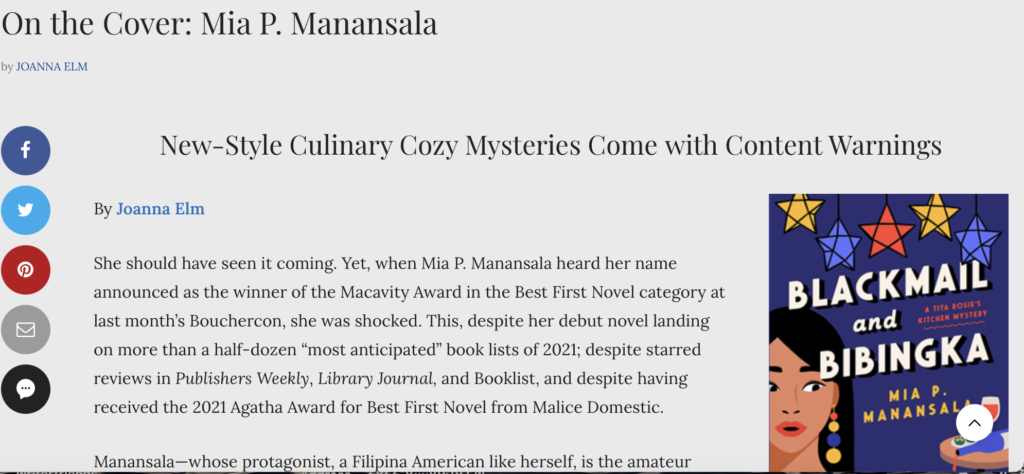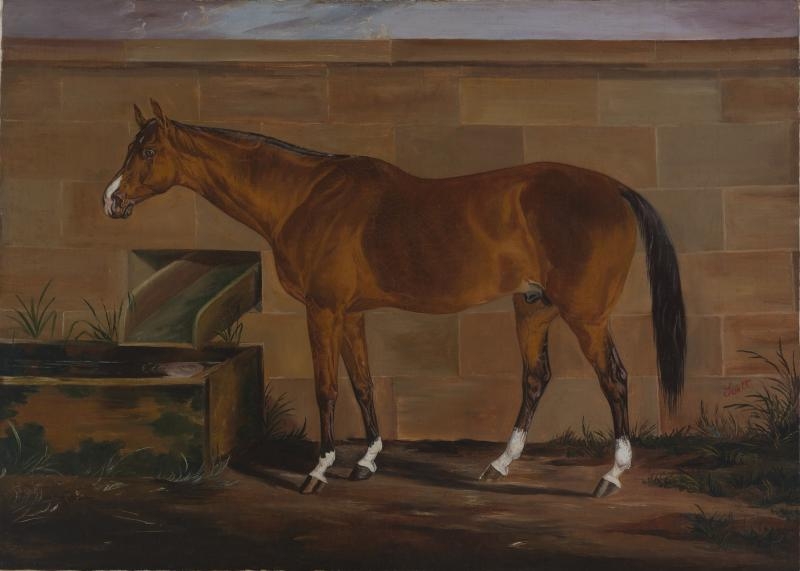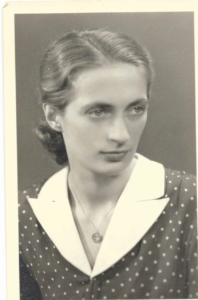That was my week, last week. I read Geraldine Brooks’s outstanding novel, Horse; I binge-watched the nauseating docudrama Dahmer- Monster: The Story of Jeffrey Dahmer , and on September 26, I reflected that my mother would have been 100 years old had she lived.
Oh, and yes, the first feature I’ve written for The Big Thrill magazine appeared on the cover of its October issue.

It’s an interview with award-winning, Filipina-American author, Mia Manansala. She writes culinary cozy mysteries featuring a Filipina-American protagonist. Didn’t think it was my type of genre until I read this one. But, of course, I’m a sucker for anything that has recipes. And, I loved talking to Mia. You can read the interview here.
It’s News To Me

I also got my hands on It’s News To Me, the new R.G. Belsky mystery in the Clare Carlson series. It’ll be released this week (October 4) but I got the advance review copy since The Big Thrill magazine also commissioned me to interview author Dick Belsky for its November issue.
That’s going to be a treat for me. Belsky and I are compadres from the NYC tabloid trenches. I’ve attended at least one of his book launch parties. He wrote a lovely author blurb for my latest thriller, Fool Her Once. We both worked for tabloids including STAR magazine (though not at the same time) and his protagonist Clare Carlson, reporter/TV news director sometimes reminds me of me.
I read It’s News To Me in a couple of days straight. It would be have been faster, but I had to finish Horse by Geraldine Brooks for a scheduled book club meeting. If not for the book club, I don’t think I would have ever picked up a novel like Horse. That’s why I am so thankful to my book club buddies for choosing titles outside my genre. They have expanded my reading horizons in ways I never imagined.
Greatest American Racehorse
Horse is a story of Lexington, real-life race horse and his groomer, Jarrett, a slave. It’s set in 1850, just prior to the Civil War. In that story, the book depicts the groomer/trainer, Jarrett, as a fictional character. It follows his life as a slave, but as one of the luckier enslaved because of his usefulness to his master, the owner of thoroughbred racehorses. Still, Jarrett is not the master of his destiny as free men are, and he knows it.
The book leaps forward in timelines to 2019, to the story of Jess, a scientist who reconstructs skeletons of animals like horses and whales for the Smithsonian, and Theo an art historian, son of a Ghanian mother and American father, working for his PhD.

What binds the timelines and the characters is a painting of Lexington, the greatest race horse of all time. Several portraits were painted of him by Thomas Scott, and one of them ends up on the sidewalk of Theo’s street as garbage offered for free to any passer-by. Theo claims it from the garbage.
Horse: Novel About Race and Racism

The novel is about race and racism as much as it is about the most famous racehorse in America. Author Geraldine Brooks successfully illustrates that old adage, the more things change the more they stay the same. Consider this passage in the book where Scott, the artist joins the Unionist troops in the Civil War and is co-opted to help as a hospital steward because of his pharmaceutical training. In this passage he reflects on the young boys who joined the confederate cause, but whom he felt it was his duty to also tend to when they were wounded.
“At first he was kindly disposed to these men, young as they were, skinny, sometimes shoeless rural boys, most from farms too poor to afford slaves…. They were, all of them, lost to a narrative untethered to anything he recognized as true. Their mad conception of Mr. Lincoln as some kind of cloven-hoofed devil’s scion, their complete disregard — denial — of the humanity of the enslaved, their fabulous notions of what evils the Federal government intended for them should their cause fail — all of it was ingrained so deep, beyond the reach of reasonable dialogue or evidence.”
Sound familiar QAnon conspiracy theorists ?
Netflix Serial Killer Docudrama
Interestingly, my reading of Horse and it’s female protagonist Jess coincided with viewing the Netflix documentary about Jeffrey Dahmer. A scene in Horse describes where Jess, as a 12-year old, smuggles a dead rat into her mother’s house so it can decompose and she can study its bone/ skeleton structure. It was a startling leap from there to the Netflix docudrama in which we see young Jeffrey Dahmer’s interest in dismembering dead animals and playing with their shiny organs!
For all my interest in serial killers and their psychopathy (research for my latest crime thriller, Fool Her Once) I was left quite unimpressed by this Netflix docudrama.
Jeffrey Dahmer is no Ted Bundy

Evan Peters’s portrayal of the cannibalistic serial killer who was responsible for the murders of 17 young gay men of color between 1978 and 1991 shows him as a charmless, slow-talking, pathetic misfit. He pleads with his victims not to leave him because “everyone is always leaving me.”
Dahmer as portrayed by Evan Peters is the polar opposite of serial killer Ted Bundy who confessed to killing 28 young women. In contrast to Dahmer, Bundy who appeared in a series of 1980 death row interviews always displayed a certain self-confidence and arrogance even in incarceration.
Okay we get it. Dahmer’s parents have a lot to answer for. We see his mother downing pills (26 a day) during her pregnancy. Meanwhile, his father, Lionel, is absent most of the time from that first marriage. He re-surfaces occasionally to instruct his son in his hobby of dismembering animals.
Monster: A Monotonous Miasma
Eventually, we see Lionel blaming himself for not spotting his son’s problems earlier. “All those red flags!” he laments.
As Daniel Fienberg in the Hollywood Reporter writes of the docudrama: “It’s a nightmarish but monotonous miasma [where] possibly the real villains of the piece are the Milwaukee police.” The docudrama suggests the police department’s racism and homophobia led to officers consistently ignoring complaints from Dahmer’s neighbors in a marginalized, African-American community. The complaints about the screams and smells coming from Dahmer’s apartment might have saved lives had the police acted on them.
Teenage War Heroine

My mother’s birth date was at the back of my mind all last week. Born on September 26, 1922, she was just 17 when the Germans declared war on Poland and strafed her village outside Warsaw sending the villagers running for their lives into surrounding fields.
In the months following she became a liaison between the shopkeepers in the village (who were mostly Jewish) and the ghetto in Warsaw into which the Germans herded Jewish residents in the capital city.
During these trips to Nazi-occupied Warsaw when she delivered bread to the ghetto residents, she became acquainted with resistance leaders. She joined the Home Army battling the German occupiers, and became part of the 1944 Rising — a movement that last 63 days before the survivors were captured and sent to concentration camps.
The Panther

Her deeds as a Resistance fighter, code name, “Pantera” (The Panther) are documented in various Polish books and historical accounts. When she died in January 2007, she was given a military funeral with a 21-gun salute before she was laid to rest in Powazki, the military cemetery in Warsaw.
Years ago when I mentioned my mother’s history to a colleague in law school, he remarked: “I guess that’s where you get your gutsiness.” It was a nice thing to say about me but not at all, no way, true.
The recent pandemic showed me I was a total baby when it came to paper towel and toilet paper shortages and other minor inconveniences. It proved to me I could never have shown the sort of guts my mother did in the 1944 Rising –or in the concentration camp to which she was deported when the Rising failed.
Happy Birthday and RIP, Mom.
Your mother sounds like she was an amazing lady, Joanna.
She definitely had quite a life!Thank you for commenting, Eldon.
Joanna, I so love your writing. I am so pleased that you enjoy our book club. Even Gutsy women have fears. I agree you did get a lot of the strength you possess from your very Gutsy mother. See you in 23.
Thank you so much for your kind words, Sandi. Love our book club get-togethers even when they’re just on Zoom. Hopefully we’ll manage some in-person meetings this season.